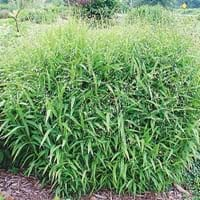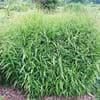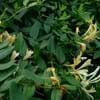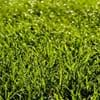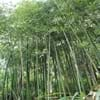Life Span
Perennial
Perennial
Type
Grass
Bulb or Corm or Tuber
Origin
Northeastern United States, Mid-Atlantic United States, Southeastern United States, South-Central United States, Texas, Mexico
South America
Types
Turtlehead, Leadwort, Aster
Pamianthe cardenasii , Pamianthe parviflora , Pamianthe peruviana
Number of Varieties
Not Available
Habitat
bottomlands, Thickets, Woods
All sorts of environments
USDA Hardiness Zone
5-9
8-10
Sunset Zone
2a, 2b, 3a, 3b, 4, 5, 6, 7, 8, 9, 10, 14, 15, 16, 17, 18, 19, 20, 21, 22, 23, 24
21,22
Habit
Arching/Fountain-shaped
Clump-Forming
Flower Color
Brown, Green
White
Flower Color Modifier
Bicolor
Bicolor
Fruit Color
Non Flowering Plant
Green
Leaf Color in Spring
Light Green
Dark Green
Leaf Color in Summer
Light Green
Light Green
Leaf Color in Fall
Lemon yellow
Several shades of Green
Leaf Color in Winter
Gold, Tan, Bronze
Light Green
Leaf Shape
Needle like
Strap shaped
Plant Season
Fall, Winter
Spring, Summer, Fall
Sunlight
Full Sun, Partial Sun, Partial shade
Partial Sun, Partial shade
Type of Soil
Clay, Loam
Loam, Sand
The pH of Soil
Acidic, Neutral
Acidic, Neutral, Alkaline
Soil Drainage
Well drained
Average
Bloom Time
Late Summer
Spring, Late Spring, Early Summer, Summer, Late Summer
Tolerances
Not Available
Drought
Where to Plant?
Ground
Ground, Pot
How to Plant?
Divison, From Rhizomes, Seedlings
Offsets
Plant Maintenance
Medium
Medium
Watering Requirements
Keep ground moist, Requires regular watering
Keep the ground moist but not water-logged
In Summer
Lots of watering
Lots of watering
In Spring
Moderate
Moderate
In Winter
Average Water
Average Water
Soil pH
Acidic, Neutral
Acidic, Neutral, Alkaline
Soil Type
Clay, Loam
Loam, Sand
Soil Drainage Capacity
Well drained
Average
Sun Exposure
Full Sun, Partial Sun, Partial shade
Partial Sun, Partial shade
Pruning
No pruning needed, Remove damaged leaves, Remove dead branches, Remove dead leaves
Pinch or prune as they grow to promote branching and bushiness, Remove damaged leaves, Remove dead branches, Remove dead leaves, Requires little pruning
Fertilizers
Apply 10-10-10 amount, Fertilize every year
All-Purpose Liquid Fertilizer, High phosphorus
Pests and Diseases
Pests and diseases free
Leaf spot, Mosaic viruses
Plant Tolerance
Not Found
Drought
Flowers
Insignificant
Showy
Flower Petal Number
Single
Single
Foliage Texture
Medium
Coarse
Foliage Sheen
Matte
Glossy
Attracts
Rodents
Bees, Birds, Bumblebees, Butterflies, Hummingbirds, pollinators
Allergy
Not Available
Unknown
Aesthetic Uses
Not Used For Aesthetic Purpose
Beautification, Bouquets, Ornamental use, Showy Purposes
Beauty Benefits
Not Available
No Beauty Benefits
Environmental Uses
Air purification
Air purification
Medicinal Uses
Not Available
No Medicinal Use
Part of Plant Used
Whole plant
Not Available
Other Uses
Used As Food
Beneficial species for attracting pollinators, Decoration Purposes
Used As Indoor Plant
No
No
Used As Outdoor Plant
Yes
Yes
Garden Design
Feature Plant, Mixed Border, Wildflower
Bog Garden, Container, Feature Plant, Foundation, Mixed Border, Water Gardens
Botanical Name
CHASMANTHIUM latifolium
HYMENOCALLIS longipetala
Common Name
Indian Woodoats, Northern Sea Oats
Peruvian Daffodil, Spiderlily
In Hindi
Northern Sea Oats
peruvian daffodil
In German
Northern Seehafer
peruvian daffodil
In French
Northern Sea Oats
peruvian daffodil
In Spanish
Avena del mar del Norte
Pamianthe
In Greek
Βόρεια Θάλασσα Βρώμη
peruvian daffodil
In Portuguese
Northern Sea Oats
peruvian daffodil
In Polish
Północna część Morza Owies
peruvian daffodil
In Latin
Avene mari septentrionali
peruvian daffodil
Phylum
Magnoliophyta
Magnoliophyta
Class
Liliopsida
Liliopsida
Order
Cyperales
Asparagales
Family
Poaceae
Amaryllidaceae
Clade
Angiosperms, Commelinids, Monocots
Angiosperms, Monocots
Tribe
Chasmanthieae
Clinantheae
Subfamily
Panicoideae
Amaryllidoideae
Number of Species
Not Available
Not Available
Season and Care of Northern Sea Oats and Peruvian Daffodil
Season and care of Northern Sea Oats and Peruvian Daffodil is important to know. While considering everything about Northern Sea Oats and Peruvian Daffodil Care, growing season is an essential factor. Northern Sea Oats season is Fall and Winter and Peruvian Daffodil season is Fall and Winter. The type of soil for Northern Sea Oats is Clay, Loam and for Peruvian Daffodil is Loam, Sand while the PH of soil for Northern Sea Oats is Acidic, Neutral and for Peruvian Daffodil is Acidic, Neutral, Alkaline.
Northern Sea Oats and Peruvian Daffodil Physical Information
Northern Sea Oats and Peruvian Daffodil physical information is very important for comparison. Northern Sea Oats height is 60.00 cm and width 50.80 cm whereas Peruvian Daffodil height is 61.00 cm and width 61.00 cm. The color specification of Northern Sea Oats and Peruvian Daffodil are as follows:
Northern Sea Oats flower color: Brown and Green
Northern Sea Oats leaf color: Light Green
Peruvian Daffodil flower color: White
- Peruvian Daffodil leaf color: Dark Green
Care of Northern Sea Oats and Peruvian Daffodil
Care of Northern Sea Oats and Peruvian Daffodil include pruning, fertilizers, watering etc. Northern Sea Oats pruning is done No pruning needed, Remove damaged leaves, Remove dead branches and Remove dead leaves and Peruvian Daffodil pruning is done Pinch or prune as they grow to promote branching and bushiness, Remove damaged leaves, Remove dead branches, Remove dead leaves and Requires little pruning. In summer Northern Sea Oats needs Lots of watering and in winter, it needs Average Water. Whereas, in summer Peruvian Daffodil needs Lots of watering and in winter, it needs Average Water.
